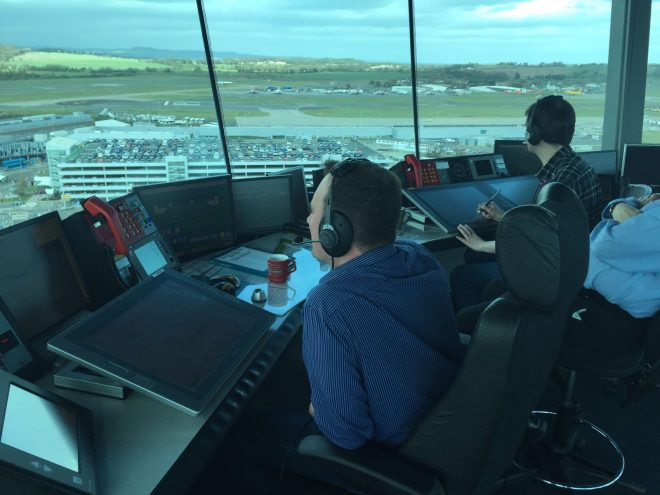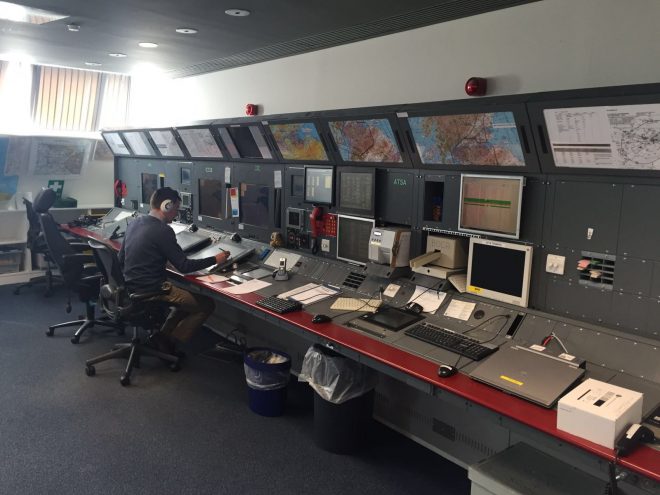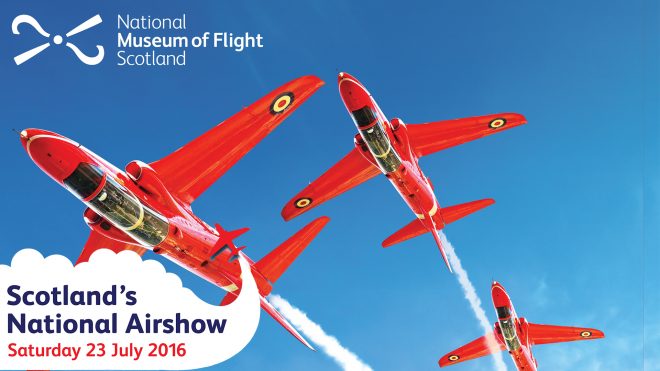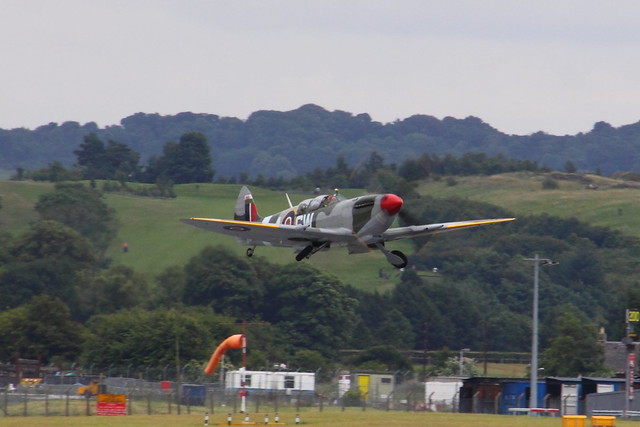#airshowscot Scotland’s National Airshow

On a busy summer day, more than 400 aeroplanes will take off or land at Edinburgh Airport, and the terminal handles over 1 million passengers every month, making it Scotland’s busiest airport by some margin. As Air Traffic Control (ATC), we work 24/7, every single day of the year (yes, including Christmas day!) to manage the skies above Scotland’s capital, and to provide a safe flow of traffic with the minimum possible delay for all of those aeroplanes, crews and passengers.
I’ve been an air traffic controller for 5 years. To apply, all you need is the equivalent of 5 GCSE’s at grade C or above, including English and Maths. Applicants then do various aptitude tests and interviews, which decide whether they’ll go to the college of ATC for training. Basic training at the college takes about 12-18 months, before you’re posted to an ATC unit for further training.
Overall the process takes 2-3 years from your first day to the day you finally control traffic on your own. Because the training process is so rigorous, when you actually become fully qualified and control real traffic you’re ready for anything, so the day-to-day job isn’t as stressful as many people think – when people visit ATC units, they are sometimes surprised at how calm and peaceful the operations rooms are. Of course, at Edinburgh, the view from the top of the tower is quite spectacular, so that helps too!

ATC can be quite a complex and busy job, but it’s always challenging and interesting, and no two days are the same Our main role is to communicate with the aircraft over the radio, issuing clearances to take off and to land, and when needed, telling aircraft which direction to head and level to fly at to keep them separated from each other. Safety is the number one priority in everything we do – there is nothing more important in aviation.

Over the airshow weekend, several of the performing aircraft will be based at Edinburgh airport. Historic and fast-jet aircraft operate in a totally different way to our normal airline traffic, and we have to take this into account, but it’s always a pleasure to work with interesting and unusual aircraft. Some of the older aircraft need to be airborne within a certain time after starting their engines to avoid overheating which can prove quite a challenge when you consider their parking area is nearly 2 miles from the end of the runway!
Once their displays are complete, aircraft sometimes return without a huge fuel reserve, so need to be back on the ground as soon as possible. The airspace around the airshow is also kept clear of all other traffic so that aircraft can perform their displays without worry of anybody getting in the way, so we will need to route airliners inbound to Edinburgh well clear. Even without the airshow, July weekends are extremely busy with holiday traffic, and if the weather is good there will be light aircraft from other local airfields in the mix too, so it will certainly be an interesting day!
If you found this post interesting there’s a good chance that your friends and colleagues will also, so do share using #AirshowScot




